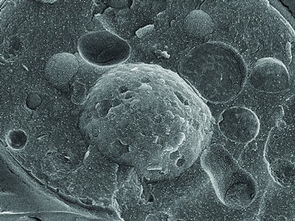At least a dozen, and possibly over 80, integral membrane proteins are associated with the inner nuclear membrane. Most of those that have been characterized can both anchor the lamina to the membrane and interact with chromatin. However, the function of most is unknown, though sequence analysis suggests that many might be enzymes. For example, the hydrophobic region of the lamin B receptor resembles a yeast enzyme involved in cholsterol biosynthesis and has sterol CI4 reductase activity when expressed in yeast. Well-characterized lamin-binding proteins include the lamin B receptor, emerin, and the lamina a polypeptides. Two unrelated genes-LAP1 and LAP2-produce a number of polypeptides with distinct structural and functional properties as a result of extensive alternative splicing of the primary transcripts.
These four proteins also contribute to organizing chromatin at the nuclear periphery. For example, the lamin B receptor binds heterochromatin protein HP1 and could thus link the envelope to condensed heterochromatin. The LEM domain, a degenerate 40-amino- acid motif common to LAP2, emerin, and MAN1, binds to an abundant small protein called barrier to auto integration factor (BAF) that also binds to DNA and has an important role in chromatin organization in both interphase nuclei and mitotic chromosomes. Despite their apparent roles in linking chromosomes to the nuclear envelope, live cell observations have shown that both HP1 and BAF are extremely mobile proteins.
Are these interactions between the chromosomes and the inner nuclear envelope functionally significant? This remains hotly debated, but a number of studies indicate that interactions with LAP2 and lamin A could be important in regulation of the cell cycle by the transcription factor E2F. Nuclear envelope proteins have been observed to interact with other transcriptional regulators, so alterations in gene expression might explain the link between mutations in nuclear envelope proteins and human disease.
Integral proteins of the inner nuclear membrane enter the nucleus by diffusion in the membrane. The lamin B receptor is highly mobile in the rough endoplasmic reticulum (ER), its site of synthesis, and rapidly diffuses to the nuclear envelope. Transit around the periphery of the nuclear pore complex requires energy. Once in the inner nuclear membrane, it becomes fixed in place, presumably by binding to the lamina or chromatin.








